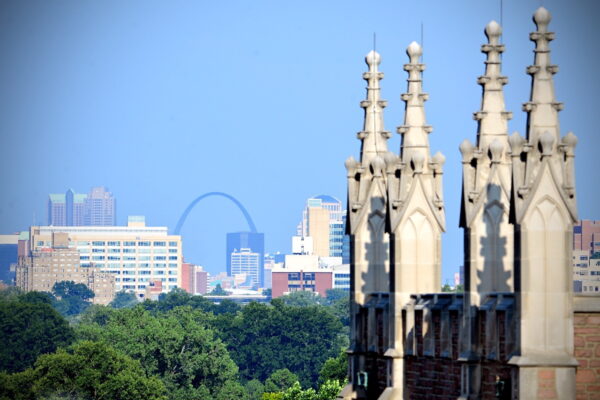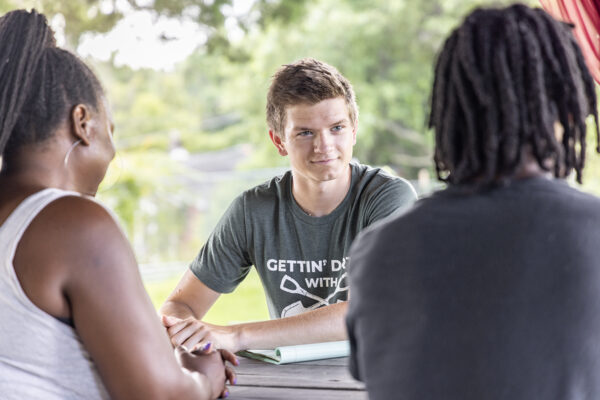Two students from Washington University in St. Louis’ Interdisciplinary Environmental Clinic (IEC) recently took aim at the state’s arguments about who bears responsibility for harmful air pollution in the St. Louis region.
David Ries, a third-year law student, and Shelby Negosian, a senior majoring in environmental analysis in Arts & Sciences, worked with IEC faculty to submit a 64-page comment letter on behalf of the Sierra Club challenging the Missouri Department of Natural Resources’ (MDNR) proposed Exceptional Events Demonstration (EED). The EED, submitted to the U.S. Environmental Protection Agency in September, attributes the region’s 2023 ozone violations entirely to Canadian wildfires.
The students’ letter argues that the state’s analysis ignores a long history of poor air quality in the area and fails to tie the local ozone violations to specific fires thousands of miles away. If approved, the demonstration could allow Missouri to claim compliance with federal air standards and avoid stronger pollution controls, even though the air quality has not actually improved.
Negosian conducted a detailed technical analysis of ozone data for the St. Louis nonattainment area. “It is inspiring to know that my technical knowledge in the environmental sciences and analysis can be translated directly into legal arguments to advocate for clean air in St. Louis,” she said. Negosian, who plans to attend law school after graduating in 2026, said her experience in the clinic helped shape her career goals.
Ries said the work at the clinic broadened his law school experience.
“I started the clinic with no environmental or administrative law background,“ said Ries, who outlined the letter and drafted the procedural arguments. “A few weeks later, thanks to the clinic’s mentorship and several late nights in the law library, I was shoulder-to-shoulder with outstanding attorneys and engineers fighting to improve St. Louis air quality on behalf of the Sierra Club.”
Elizabeth Hubertz, director of the Interdisciplinary Environmental Clinic, said the variety of backgrounds and knowledge is important in environmental legal work.
“Bringing a diverse team together is the key to success when fighting for environmental justice,” said Hubertz, who is also a professor of practice at WashU Law.
Air pollution continues to disproportionately affect vulnerable communities in the St. Louis region. According to the Missouri Department of Health and Senior Services, asthma death rates for Black residents are four times higher than for white residents statewide — and nearly seven times higher in St. Louis city.
On Nov. 3, MDNR filed two other documents: a redesignation request and a maintenance plan. The redesignation request asks the EPA to reclassify the St. Louis Ozone Nonattainment Area to “attainment” – which would amount to the agency finding that the area has implemented sufficient emissions reductions to meet the applicable air quality standards. The maintenance plan purports to demonstrate that the St. Louis area will remain in compliance with the air quality standards through 2037.
In addition, the Illinois EPA filed its own EED on the same day.
“We are currently working on responding to the new Missouri documents, as we see those as a blatant attempt to sidestep the state’s responsibility to implement actual improvements to local air quality, instead of manipulating the procedural requirements of the Clean Air Act to sidestep substantive air pollution controls,” said Laura Robb, supervising attorney for the clinic.
The IEC, one of many hands-on clinics at WashU Law, gives students from across disciplines the opportunity to work with clients on real-world environmental and public health issues, combining scientific and legal expertise to advocate for cleaner, healthier communities.


